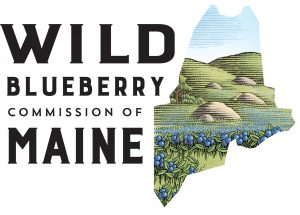Wild Blueberry Commission of Maine
 The Wild Blueberry Commission of Maine has its own website:
The Wild Blueberry Commission of Maine has its own website:
The Commission is not part of the University of Maine although we work closely on research and educational efforts. It is a state statute dedicated to conserving and promoting the prosperity and welfare of this State and of the wild blueberry industry of this State by fostering research and extension programs, by supporting the development of promotional opportunities and other activities related to the wild blueberry industry. Please visit their website for contact information and for more about Commission committees.
These priorities have been established by the Advisory Committee of the Wild Blueberry Commission of Maine (PDF to download and print is available below).
2022 Maine Wild Blueberry Advisory Committee Research and Extension Priorities
- Enhance the resistance and resilience of crop production to increasing climate variability and disturbance.
- Develop weather-based monitoring tools that inform integrated precision management guidelines by predicting crop development, physiology, and key pest development or control stages.
- Develop and test techniques to mitigate the effects of climatic disturbances on crop health, flower development, pollination, and fruit set.
- Increase sprout year crop potential (flower buds/acre) by identifying techniques and developing management guidelines that improve stem density and production of flower buds.
- Understand parameters controlling plant dormancy, enhance rhizome spread, and develop techniques to improve wild blueberry stem coverage.
- Develop integrated plant health, nutrition, and pest (insect, disease, and weed) management protocols to optimize crop physiology, mitigate growing season drought stress, and improve dormant season winter hardiness.
- Improve fruit set through advancements in plant health, mitigation of environmental risk, and enhancement of pollination efficiency.
- Develop protocols to maximize fruit set and mitigate drought stress through advancements in crop nutrition and physiology.
- Develop novel techniques and protocols to mitigate frost damage to floral tissue.
- Enhance crop and land management techniques to protect pollinator health – commercial and native – and the mutual sustainability of pollinators and the wild blueberry industry.
- Improve carried fruit efficiency by developing precision crop load management techniques which support crop physiological needs at each fruit development stage.
- Develop integrated plant health, nutrition, and disease management protocols to reduce fruit abortion by mitigating growing season drought stress.
- Determine genetic and physiological factors limiting fruit sizing and quality (color, firmness, flavor, and ripening).
- Understand fruit physiological response to heat stress and develop mitigation strategies.
- Maximize marketable fruit by improving pre-harvest fruit retention and quality, reducing shrink at harvest, and developing novel post-harvest techniques to maintain fruit quality to the market.
- Assess/update protocols for monitoring of pests and diseases to inform management decisions and the development of action thresholds.
- Evaluate new or revised cultural, biological and synthetic methods for more effective control of insects, weeds, and diseases.
- Develop whole crop protocols to improve fruit retention, color, firmness, and flavor for frozen, value-added, and fresh pack.
- Develop novel harvest technology to minimize harvest shrink, reduce fruit damage, and to commercialize across scale of production.
- Develop novel post-harvest environmental, material, and mechanical solutions that reduce postharvest shrink and damage to berries, maintain color, firmness, and flavor, and improve processing and fresh pack line efficiency.
- Explore the food safety hazards that may be associated with wild blueberries to support improving industry food safety.
- Investigate the microbial load and prevalence of pathogens on the fruit, and the soil, and irrigation water.
- Investigate possible points of contamination in the wild blueberry supply chain (i.e., from farm to fork).
- Investigate the efficacy of fruit surface treatments to reduce the microbial load and/or reduce cross-contamination.
- Develop novel food safety solutions to minimize foodborne pathogens in harvested, market-ready wild blueberries with minimal to no adverse effect on sensory factors and overall quality.
- Deliver clear, concise, and easily adaptable research results to producers.
- Distribute research summaries and recommendations in a variety of formats (e.g., websites, social media, fact sheets, and in-person and remote presentations and workshops).
- Provide outreach programs that are accessible to all producers regardless of experience, geographic location, or rural connectivity challenges.
- Promote the use of farm economic modeling tools and provide a cost-benefit analysis of management practice options.
Wild Blueberry Commission of Maine
5784 York Complex, Suite 52, Orono, Maine 04469-5784, 207.581.1475 wbcm@maine.edu, www.wildblueberrycommissionofmaine.org
To Download and Print:
Wild Blueberry Commission of Maine Research and Extension Priorities (PDF)
